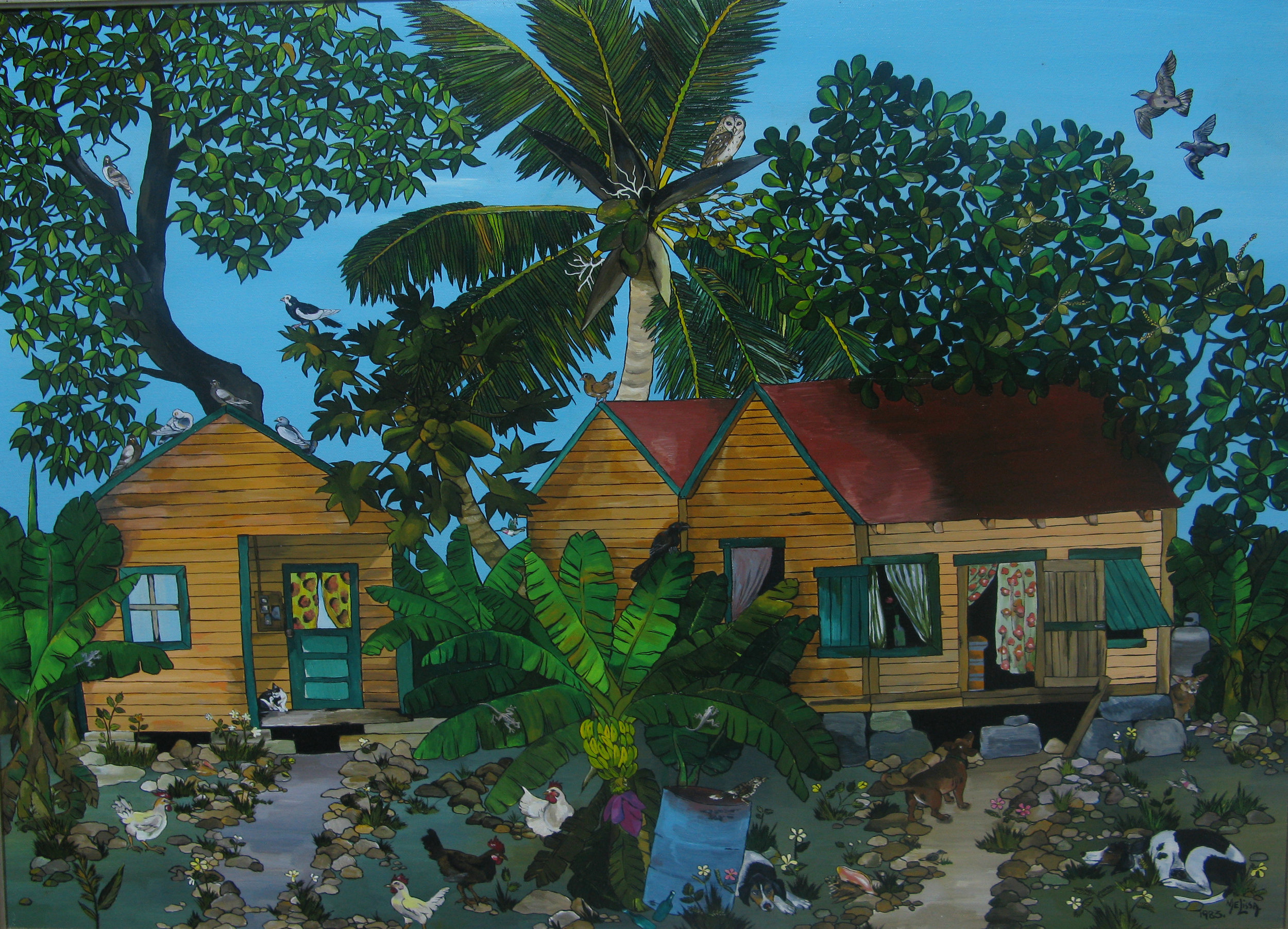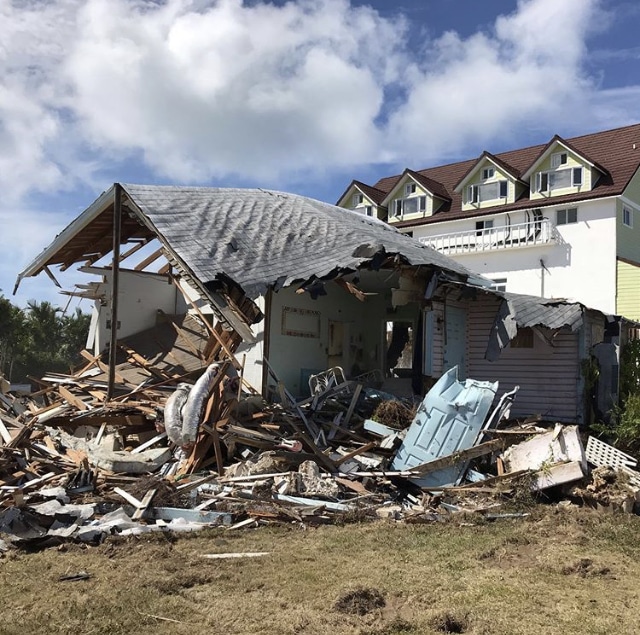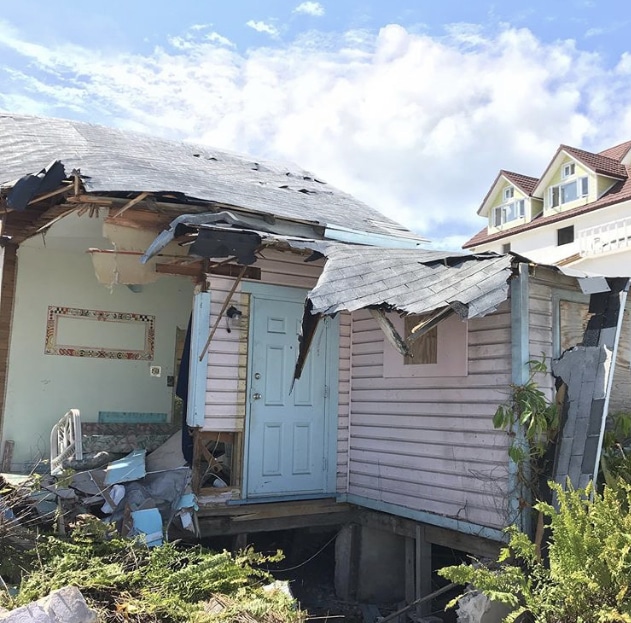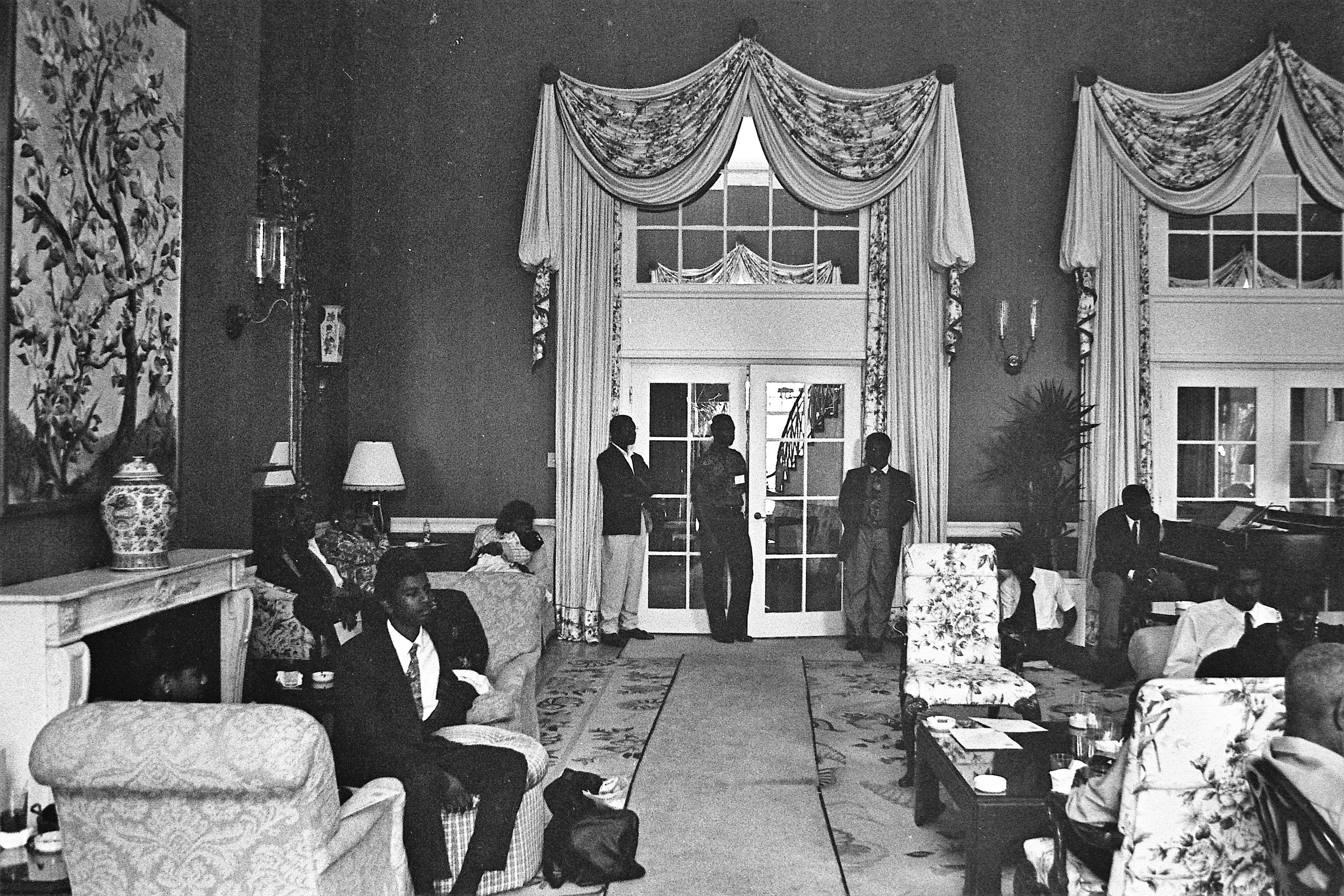“Wellington Street Dwelling”: Exploring the Bahamian Vernacular
Kelly Fowler · 17

An island landscape in the mind of a non-native may include picturesque coastal scenes of blue and turquoise shaded waters gradually transitioning to crystalline, onto shallow shores of powder white sandy beach, and further to lush foliage of coconut and palm trees. To the native Bahamian, the island landscape may vary considerably. The landscape may range anywhere from the quintessential narrow, yet neat streets featuring well-kept, board houses nestled among vibrant bougainvillea, poinciana, and golden shower trees, to scenes of markets, daily life and the historic Over-the-Hill community where centuries-old silk cotton grow, fruit trees flourish and royal Bahamian potcakes roam freely.
Both the outsider’s notion and the insider’s experience are represented in Bahamian art. Melissa Maura’s 1983 oil on canvas painting entitled Wellington Street Dwelling is a glimpse into an insider’s experience of island life and landscape. The painting draws the viewer into the lived experience of the native Bahamian and invites the onlooker to reflect on the diversity of the island landscape and how the landscape has changed over time.

Maura’s Wellington Street Dwelling (1983) painting is a scene typical of early Bahamian community on any Bahamian island. The landscape features three small yellow clapboard houses clustered together in what could be the same yard. The houses are elevated on concrete blocks and situated among breadfruit, banana and coconut trees. Clapboard houses, most popular during the 19th century, were built on stilts or masonry pilings and angled to promote airflow through the house. The clapboard construction with its raised floors served to keep floors cool in hot weather, safely above floodwaters during storms, and mobile when the time came to relocate. The push-out Bahama shutters over the windows also allow for shade, protection from rain and maximize ventilation.
The buildings are classified as local vernacular in architecture, meaning they are relaxed and do not adhere to complicated rules of composition. The homes represented were not designed by architects or constructed with specialists. Instead, they were built by local people with informal training and available resources. Boat builders were typically engaged in their construction. It was not until the early 20th century that buildings were designed and built by trained professionals.
The fruit trees surrounding the clapboard houses are ones commonly found on the Bahamian landscape today, though they are not native to The Bahamas. Many of the fruit trees that adorn the Bahamian landscape, including bananas and citrus fruits, are the result of the Columbian exchange – the transference of plants, animals and technology between the Old World and the New in the period following the arrival of Christopher Columbus in the Americas. The coconut tree in Maura’s painting is not native to The Bahamas, but is an exotic species considered “naturalized” as it has become established throughout the islands, naturally reproducing and does not invade or interfere with native vegetation. The breadfruit tree, along with others like guinep, mango and dilly were fruit trees historically planted by Bahamians around their homes as boundary markers and also for their economic value. In due season, the fruit would be harvested and used to feed the family or taken to market and sold. Other fruit trees like banana trees in the painting were planted irregularly in crevices or holes in the surface rock, from which the term banana hole is derived. In the Bahamas Almanac for the year 1879, Edwin Charles Moseley reported of the scattered wooden houses of Bain and Grant’s Town, seldom more than two rooms, and the view from the hill as only roofs as buildings were embowered in foliage.


Today, the island landscape as represented in Maura’s painting is changing under the influence of different groups of people and new technologies. The once common clapboard houses have become increasingly scarce. Though the construction method is sound and clapboard comparable to concrete when quality wood is employed, many old clapboard homes have been demolished (intentionally or by neglect) and replaced by structures viewed to be of sturdier construction and design. Modern home builders are favouring concrete construction, some adding a Hardie-board finish to achieve the charming character of the traditional Bahamian island board house. The loss of many clapboard structures in New Providence make the Out Island communities, where many are still well-kept, all the more enchanting to the visitor. Harbour Island and the Abaco Cays are among those well known for their preservation of traditional architecture.
Melissa Maura’s Wellington Street Dwelling serves to document the Bahamian island landscape at a time when the environment was less complicated. The scene represents a living tradition of by-gone days, where the built environment (architecture) was linked to native island life experience (culture and climate) and economy (resources and income). Orjan Lindroth, Nassau-based sustainable developer and producer of A Living Tradition, the first book to document Bahamian architectural patterns, emphasizes nature as the foundation of all wealth and the importance of maintaining buildings, construction methods and designs that are responsive to the unique Bahamian environment. Maura’s painting is a reminder of how generations of Bahamians lived in harmony with the natural environment and how those principles of adapting and conserving resources made island living sustainable.
Maura’s landscape differs in composition and style from those painted by other Bahamian landscape artists like Alton Lowe, Eddie Minnis, and Chan Pratt—the last of whom currently has a stunning retrospective entitled Resurrection at the NAGB—but is no less significant. She draws from her own life experience, captures Bahamian vernacular architecture and injects her appreciation for Bahamian flora and fauna that dot and move across the landscape freely. Wellington Street Dwelling is a respected contribution to the collection of Bahamian art and is held in the National Collection at the National Art Gallery of The Bahamas.
Kelly Fowler is a guest writer at the National Art Gallery of The Bahamas. She has a background in interior design.


